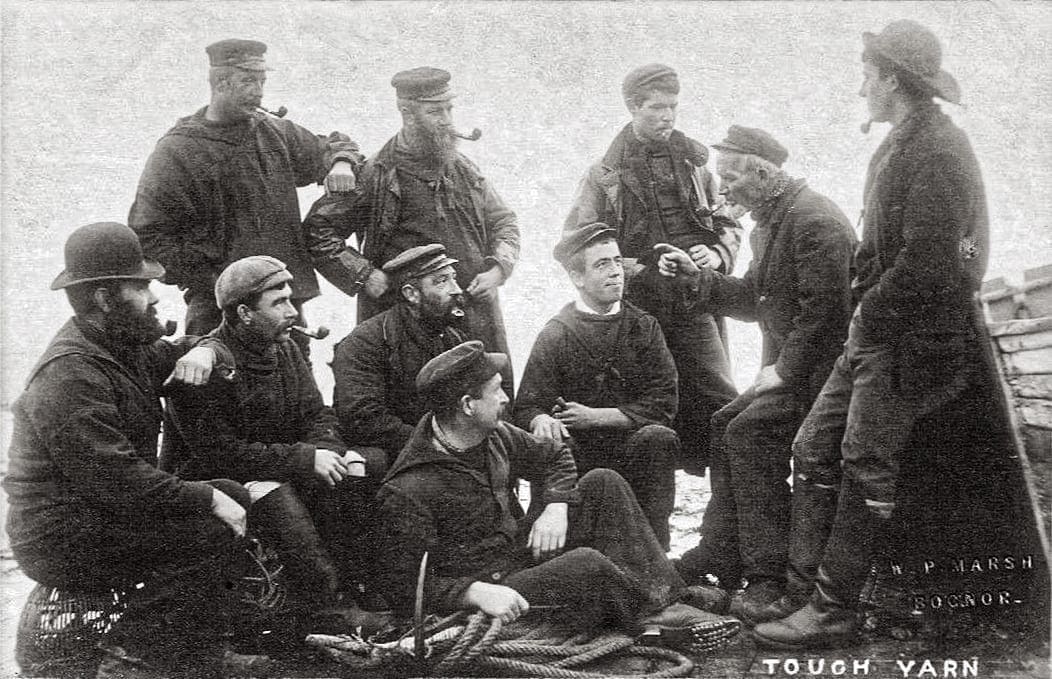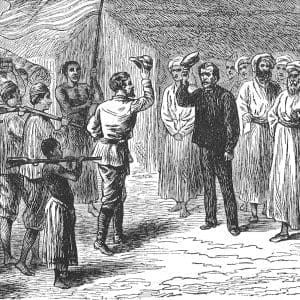Stories make our ideas real and relevant, and are helpful tools when introducing change. This article has a few examples of stories - all around the topic of introducing change.
I’ve been reading Dennis McDonald’s posts recently, and he’s latched onto the Baby Boomer Brain Drain issue, as an offshoot of some thoughts around blogs and wikis as potential tools to capture knowledge. The most insightful line in one post goes like this:
… when a knowledge management system is implemented and equal attention is not placed on the relationships and communications associated with the people who created and use the information … the system will under-perform and will not be seen as a critical work tool.
Pretty classic stuff, pseudo-obvious yet bears repeating, every time you launch into yet another Silver Bullet (which lately covers Web 2.0 and SaaS / Web Services). Change Management and User Acceptance, two critically important pieces of any project, are typically the make-or-break success factors.
I’m reminded of one of my favorite interview questions …
Everybody has war stories. Tell me two: a particularly good experience, and a particularly horrible experience.
I like to ask the question and shut up – a lot of what I’m looking for is in the way they answer the question. You definitely get points if you walked away from the experience with some lessons learned. I’ve certainly collected some good ones over the years, especially in the area of change management.
My favorites, in no particular order (and remember, not all of these are my direct experiences)…
- The team went through the requirements phase of a typical Knowledge Management deliverable; “Expertise Locator”, a Lotus Notes database of people and their specific skill sets. The community would self-advertise, and field questions from colleagues around the globe. Unfortunately, the desired collaboration was between US and Japanese scientists, and there were cultural and scientific norms in place, that frowned upon “asking for help”. This project never got beyond the concept phase.
- Another Notes collaboration database, in the early days of the hype around CRM. Symantec’s Act! had the low end, and Siebel held the high ground; the team was looking for something in the middle, in terms of cost and capabilities. The target user group was in the Medical Marketing area of a pharmaceutical company, and like most sales-oriented individuals, defined their value to the company by who and what they knew. What would ever incent them to capture that knowledge in a database for anyone to use? Well, the group’s manager had the right idea – quarterly bonuses were dependent on the quantity and content of the data entered into the system. (That implementation was quite successful … never underestimate the motivation of coin-operated individuals).
- A small sales team, in a B2B situation, multiple locations. They’ve read the hype, and (correctly) targeted Symantec Act! as the proper platform. Now, they wanted to dive in full steam (30 users, 24×7 access, full database synchronization), but the internal analyst knew these guys – salt of the earth, relationship sellers, etc. – and didn’t really want to sink capital and time into infrastructure unless they were serious. So, he set up a trial run, with three of the team (including the Big Idea guy) fully installed and syncing / sharing data. Well, after a few weeks, they realized that the only way to get value out of the database was to make sure they entered all of their conversations and connections. Hmmm. Most people want to read the information, but not type it in. This one was over before IT burned a lot of time and money configuring servers …
- An ERP vendor brought in a new interface to their product – an alternate menu structure, as it were, where a process map was drawn on the screen, and users navigated through the system by following the process map. Ingenious, really, and it helped them get the sale; unfortunately (no big surprise here), the company wanted to implement their own processes. The implementation team got bogged down in the details of documenting, when the folks who knew things begged off for lack of time. Not surprisingly, the user-friendly interface was one piece of the scope that was trimmed early, to try and keep to the schedule.
- An ambitious order-configurator project nearly ground to a halt from the lure of the GUI. Laying out a complicated elevator fixture, with buttons and keys and such, subject to extremely complicated ADA rules for accessibility, UL rules for safety, local building codes, and the physical limitations of the components. A difficult task was made worse as the project sponsor insisted on the “user-friendly”, drag-and-drop ideas behind commercial packages like Visio. Unfortunately, the folks that understood all the configuration rules didn’t have a clue on how to translate their knowledge into the OO constructs required by the GUI. A lot of detail and time was lost in the translation …
- A custom truck-trailer components manufacturer was often frustrated by his engineering group, who kept saying things couldn’t be designed and delivered to meet thus and such a specification. Unfortunately, smaller local competitors kept figuring out how to do the impossible – and often times, the CEO had to acquire the local expertise to solve the problem, rather than figure it out within the four walls of his R&D group. Resistance to thinking in new ways left so many opportunities to languish, it really drove the guy nuts.
Each of these experiences has nuggets of lessons for future projects. My personal KM secret is to grab as much “lore” from the War Stories that are shared with me, pull the common threads together, and try not to repeat the mistakes of the past.
21 August, 2006






Comments (0)